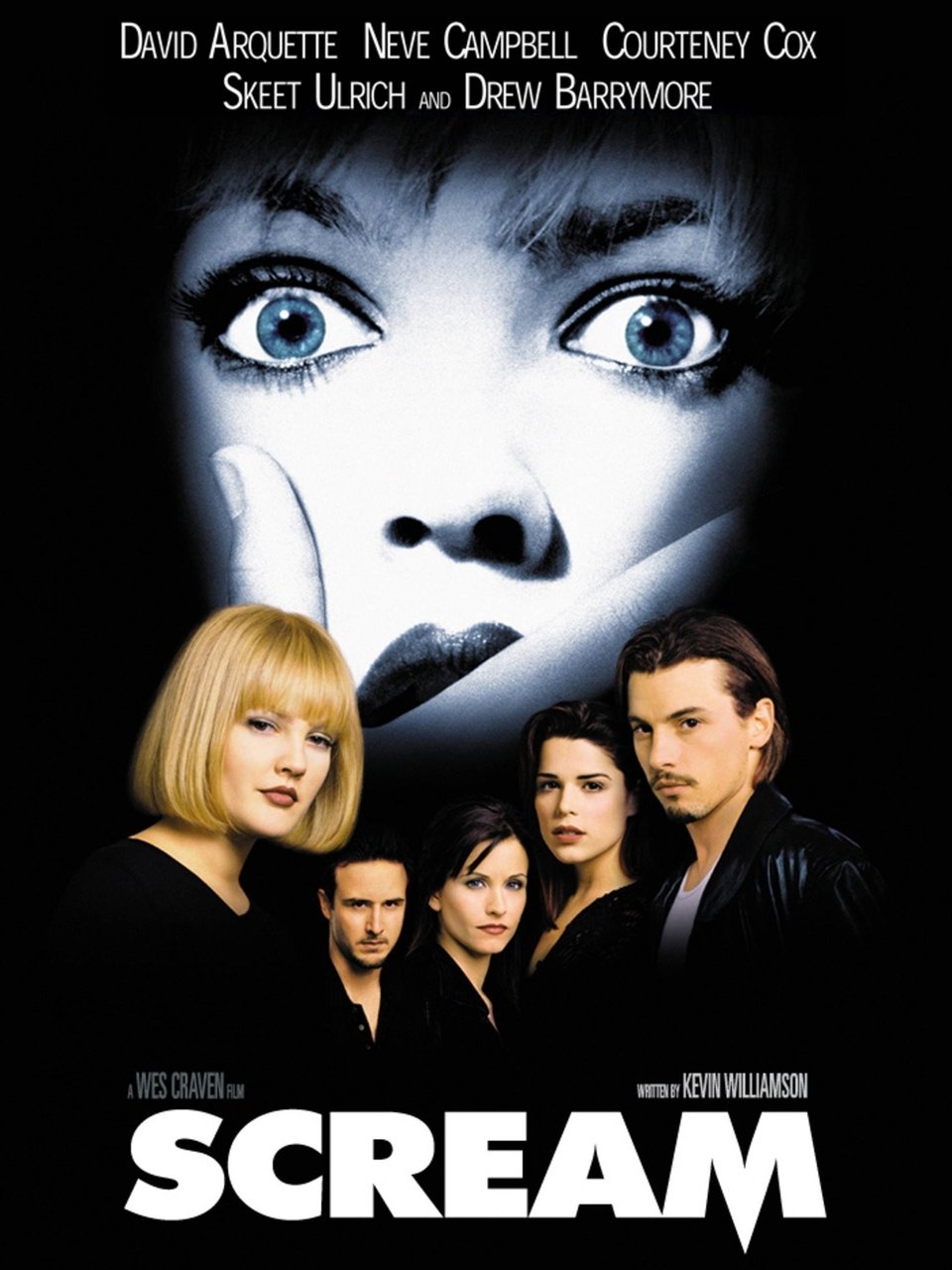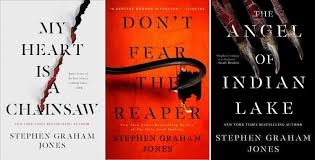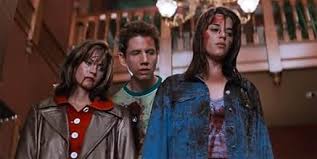Kids These Days Don't Have Favorite Scary Movies
Hi all! Splat summer has ended, autumn has almost begun, and school is back in session. The Spooky Season Spooktacular 2025 begins in less than a month, and there’s a giveaway on my Instagram for the first three people who guess the theme correctly, with one hint a week until it begins! The winners will be announced October first! In the mean time, here’s some back-to-school horror with my little (it’s very short this first week of school had me busy) analysis of Scream (1996). Shoutout to Jasper Paul for this one.

At this point in time (2025), the meta slasher has become a very well-known subgenre. From movies like Cabin in the Woods to novels like Stephen Graham Jones’ Indian Lake trilogy, slashers and their characters are, at this point, almost assumed to be genre aware. A lot modern slashers are, as I discussed in my last post about summer horror, either parodies, or homages to those that came before. Pretty much everyone who interacts at all with modern popular culture will come into contact with a slasher spoof of some kind. And the fun thing about this subgenre is, unlike others in the greater genre of horror, we know exactly when it started.
On December 20th, 1996, Wes Craven released Scream, and completely changed pop culture forever. This film sets up what we now call the ‘rules of horror’, which are now used to measure whether or not a movie is a slasher. It then subverts those tropes – tropes that Wes Craven himself helped create, with movies like A Nightmare on Elm Street and The Hills Have Eyes. Craven, Carpenter, Cronenberg, and Cunningham are the Mount Rushmore of late-century horror directors, as it were. Cronenberg did the body horror, Carpenter brought the masked madman and the score, Cunningham gave us summer horror, and Craven took all of it and ran for the watching hills. Not only did he create the man who’d haunt America’s nightmares for another forty years, he also created the killer who would…mock his own genre?

See, one of the things Scream does is make fun of itself as it makes fun of other horror movies. There is one person who knows the rules for horror movies, which he recites to the gathered teens as they watch Carpenter’s classic Halloween, and no one listens to him. Rose McGowan’s character Tatum tries to flirt with Ghostface before he kills her because she thinks it’s someone playing a prank. Craven not only understood the genre he was turning on itself, he understood the people he was putting in it. His first iconic final girl, Nancy Thompson, becomes genre aware almost immediately. She stops sleeping, starts planning, ignores everyone trying to tell her she’s crazy because she’s not. The kids in Scream, on the other hand, joke off their classmates being brutally murdered in their own homes. Except, of course, for Sidney Prescott.
Just like Scream marked the beginning of a new age of horror films, Sidney Prescott opened the door for a new kind of final girl. If we think back to the genre’s earlier final girls – Laurie Strode, Sally Hardesty, Ellen Ripley, Adrienne King, even Nancy Thompson – we don’t know much about them before the horrible things start happening to them. Sally and her friends are just traveling through Texas to check on her grandfather’s grave. Laurie’s a high school babysitter. Ripley’s a space trucker, Adrienne’s a camp counselor, Nancy’s another high school student, and that’s all we get. A couple of them – Sally and Nancy in particular – play a little in the ‘broken family’ space of “implied reasons this is happening” (see also: ‘mother who wears pants’). But otherwise, they are survivors, smart girls. It doesn’t matter what they were before this, because they can never be that again. But Sidney is different. We know what’s happened to her before now. We know who else knows about it, we know she used to have a boyfriend and kind of still does. We know she has no qualms about punching asshole reporters in the face. And not only is she a new kind of final girl in the fact that she has a backstory to speak of, she is a new kind of final girl in the sense that she doesn’t do what she’s supposed to at all.

The term ‘final girl’ was first coined in Carol J. Clover’s 1992 book Men,Women, and Chainsaws, which is about gender in horror films in that time. She sets out rules for the final girl, and they are the ones detailed in Scream – though the phrase ‘final girl’ is never used in the movie – don’t have sex, don’t drink or do drugs, do your homework, be smart, quiet, and unsuspecting. Now, while other final girls have broken these rules – Laurie Strode smokes weed in Halloween, but coughs after to indicate that this isn’t actually a thing she does, Sidney does so in a more, shall we say, drastic, way. Not just by having sex, either. She’s a bit of an outcast at school, she doesn’t much care about committing acts of violence against people who are hurting her, she’s broken up with her boyfriend, then has sex with him…the list goes on. Basically, Sidney Prescott makes a point of breaking all the rules, and then Scream makes a point of her survival.
So Scream revolutionized the genre and its characters forever in just under two hours. It was the shockwave that hit American culture at the end of the millennium. So what next? Well, a franchise of course, one that plays on itself, creates an in-universe version of itself, even, and is still ongoing. And meta spoofs of this meta spoof, like Scary Movie. Oh…and none of this is contained to film. I really can’t adequately communicate the sheer magnitude of impact that Scream had, and continues to have, but I can give y’all a little, much abbreviated list of media that we would not have without Scream.
I Was A Teenage Slasher: novel by Stephen Graham Jones
The Final Girl Support Group: novel by Grady Hendrix
The Fear Street trilogy: Netflix film trilogy
Scary Movie franchise
The Indian Lake trilogy: book series by Stephen Graham Jones
The Blackening (2022)
Most modern slashers, really
Terrifier (2016)
…and so on

Because, just like every summer slasher is inspired by Friday the 13th, and every vampire movies is inspired by Dracula, if you are watching a slasher movie that released after around 1998, congratulations, you’re watching a movie inspired by Scream. That’s how big its impact was. Because the thing it did was ingrain the idea of ‘horror rules’ so deep under the skin of American culture that even people who aren’t too keen on the genre know about them. It’s like AIDS era horror villains. Their creators probably didn’t consciously tie them to rising fears about queer people, but they ended up there anyway because that’s what was scary. At this point, everyone knows that, traditionally, you don’t have sex if you want to survive a horror movie. It’s such common knowledge that people tend to forget it has an exact origin point. The rules just…are. And either you follow them on purpose, or you subvert them in some way. Either way, you’re aware of them. They’re in your head, written in blood on the wall, hovering just over your shoulder as you write your script. When those rules were first drunkenly shouted at a room of disinterested teenagers at an illegal house party, they carried across the country, and have echoed ever since. And, even in the moment of their creation, they imploded in on themselves, and a new kind of Final Girl rose from the ashes. As she always does, and always will.

Thanks for reading all! Don’t forget to get your guesses in for this year’s Spooky Season Spooktacular theme for the chance to get early access! Happy reading, stay spooky, and tell your friends! 🩸🔪👻